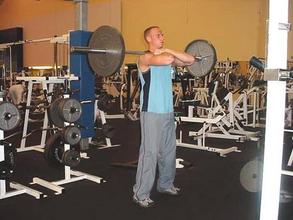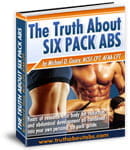by Mike Geary, Certified Nutrition Specialist, Certified Personal Trainer
In this article, I have an intriguing discussion about cardio workouts, which will hopefully get you thinking differently, and trying new things.
You may know I've been called the anti-cardio guy before, but this week I'm back posing the question to you...Do you really need cardio training to get lean and in great shape? By the way, you'll see in a minute that I'm not really "anti-cardio", just "anti traditional cardio".
Most fitness buffs, weekend warriors, or anyone trying to get in shape or lose body fat, consider it a fact that they need "cardio" exercise to accomplish these goals. They would never even question it. However, I'm not only questioning it, I'm going to refute it! In fact, you may be surprised to know that some of the leanest and meanest people I know (men and women), NEVER do any type of normal or traditional cardio. And I've spent over 15 years working out in various gyms, and hanging out with athletes of all sorts, so I've seen it all.
I will say that there can be a place for low-moderate level cardio for really overweight or deconditioned people, but even in those cases, there can be more effective methods.
But what exactly is "cardio"? Most people would consider cardio to be pumping away mindlessly on a treadmill, riding a stationary bike, or coasting on an elliptical machine, while watching the TV screen at their state of the art gym. This is what I call "traditional cardio". Hmmm, no wonder the majority of people get bored with their workouts and give up after a couple months without seeing results.
But if you look closer, "cardio" exercise can be considered any type of exercise or activity that strengthens the cardiovascular system. I'm not going to get into anything technical like increasing your VO2 max or anything like that. To keep it simple, if it gets your heart pumpin, and gets you huffin and puffin, it's cardio. I don't care if you're holding dumbbells or a barbell and everyone calls it a weight training exercise...it's still conditioning your heart.
Let's take a look at a couple examples. Take a barbell (or dumbbell, or kettlebell) clean & press for example, which involves lifting a barbell from the floor up to shoulders, then push pressing overhead. And listen up ladies, because even though this is usually seen as a manly exercise, it doesn't matter if you're not lifting 250 lbs; if 45 lbs is challenging to you, then you will still benefit just as much.
At first glance, most people think of the barbell C&P only as a weight training exercise or strength exercise. However, I challenge you to do a hard set of around 10-15 reps on the C&P. If you used a challenging enough weight, what you'll find is that your heart rate is probably up to about 80-90% of your recommended max, and you are huffing and puffing like you just ran a 100-meter sprint (which by the way, sprinting kicks the crap out of jogging any day if you want the easiest way to lose the flab).
Try the same thing for a set of 20 reps of one-arm snatches or swings with each arm with a kettlebell or dumbbell, and tell me your legs aren't burning, heart racing, and you're gasping for breath. How about trying 5 minutes straight of bodyweight squats, lunges, and pushups with very little rest. Again, notice your heart pounding, sweat pouring off of you, and chest heaving for breaths!
Try and tell me you're not conditioning your heart with this style of training! Conventional thinking says that these are weight training or strength training exercises. However, they are fullfilling your cardio workout needs as well.
Not only do you save time, but you strengthen and condition almost every muscle in your entire body with these full body exercises if you do them with enough intensity...something that can't be said for that boring stationary bike ride or treadmill jaunt while reading or watching TV. Seriously, if you can read or watch TV while doing any exercise, you're not concentrating enough on what you're doing, plus you're probably not working out hard enough to see any real results.
I challenge you to give the "traditional cardio" a rest for a month or two, and start training the way I explain in my internationally-selling Truth about Six pack Abs Program, and see how you start getting leaner, more defined, and your six pack starting to show through what used to be stubborn stomach fat deposits.




